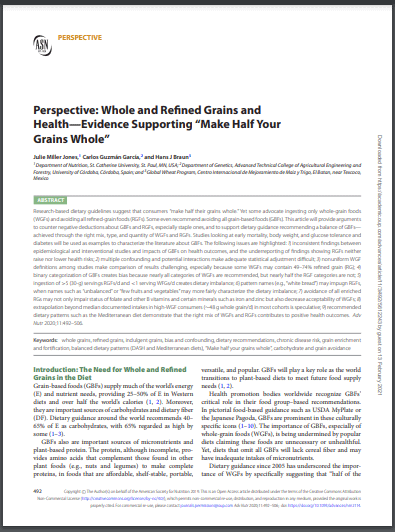Research-based dietary guidelines suggest that consumers “make half their grains whole.” Yet some advocate ingesting only whole-grain foods (WGFs) and avoiding all refined-grain foods (RGFs). Some even recommend avoiding all grain-based foods (GBFs). This article will provide arguments to counter negative deductions about GBFs and RGFs, especially staple ones, and to support dietary guidance recommending a balance of GBFs – achieved through the right mix, type, and quantity of WGFs and RGFs. Studies looking at early mortality, body weight, and glucose tolerance and diabetes will be used as examples to characterize the literature about GBFs. The following issues are highlighted: 1) inconsistent findings between epidemiological and interventional studies and impacts of GBFs on health outcomes, and the underreporting of findings showing RGFs neither raise nor lower health risks; 2) multiple confounding and potential interactions make adequate statistical adjustment difficult; 3) nonuniform WGF definitions among studies make comparison of results challenging, especially because some WGFs may contain 49-74% refined grain (RG); 4) binary categorization of GBFs creates bias because nearly all categories of WGFs are recommended, but nearly half the RGF categories are not; 5) ingestion of >5 (30-g) servings RGFs/d and <1 serving WFGs/d creates dietary imbalance; 6) pattern names (e.g., “white bread”) may impugn RGFs, when names such as “unbalanced” or “few fruits and vegetables” may more fairly characterize the dietary imbalance; 7) avoidance of all enriched RGs may not only impair status of folate and other B vitamins and certain minerals such as iron and zinc but also decrease acceptability of WGFs; 8) extrapolation beyond median documented intakes in high-WGF consumers (∼48 g whole grain/d) in most cohorts is speculative; 9) recommended dietary patterns such as the Mediterranean diet demonstrate that the right mix of WGFs and RGFs contributes to positive health outcomes.

